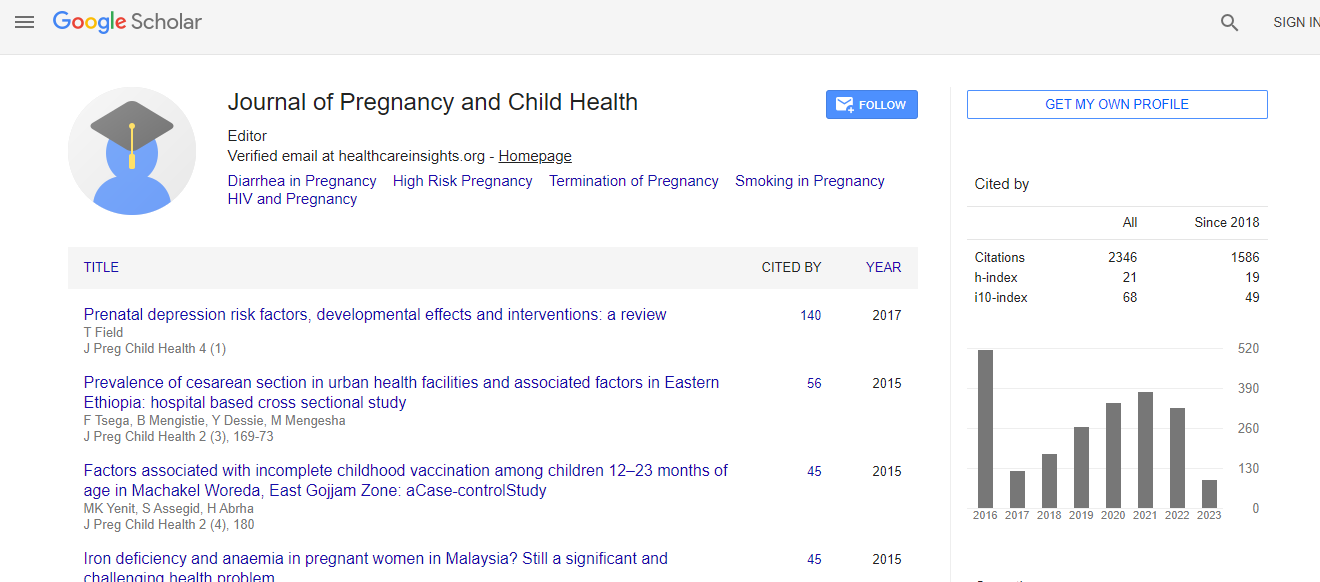Research Article
Contraception Use and Factors Contributing To Non-Use of Contraception among In-School Adolescents in Toke Kutaye Woreda, West Shoa Zone, Oromia Regional State, Ethiopia
| Fantu Hidata1, Amare Worku2 and Fekadu Urgessa1* | |
| 1Haramaya University, Ethiopia | |
| 2Addis Continental institute of Public Health, Ethiopia | |
| Corresponding Author : | Fekadu Urgessa Haramaya University, Ethiopia Tel: 251923330640 E-mail: urgessafekadu@gmail.com |
| Received: June 16, 2014; Accepted: July 22, 2015; Published: July 27, 2015 | |
| Citation: Hidata F, Worku A, Urgessa F (2015) Contraception Use and Factors Contributing To Non-Use of Contraception among In-School Adolescents in Toke Kutaye Woreda, West Shoa Zone, Oromia Regional State, Ethiopia. J Preg Child Health 2:186. doi:10.4172/2376-127X.1000186 | |
| Copyright: © 2015 Hidata F, et al. This is an open-access article distributed under the terms of the Creative Commons Attribution License, which permits unrestricted use, distribution, and reproduction in any medium, provided the original author and source are credited. | |
| Related article at Pubmed, Scholar Google | |
Abstract
Background: Adolescence is a transitional period from childhood to adulthood characterized by significant physiological, psychological and social. The main issues that have strongly influenced the pattern of adolescent pregnancy include the declining age at menarche and the increase in the number of years spent in school. This increases the length of time that they are exposed to the risk of adolescent pregnancy.
Objective: Objective of the study was to assess use of contraceptive and factors contributing to nonuse of contraceptive among in school adolescents in toke kutaye woreda in west shoa Zone, Oromia regional State, Ethiopia from November 1, 2014 to December 31, 2014.
Methods: Design of the study was institutional based cross-sectional study design.
Result: From sexually active adolescents 40.2% of adolescents ever use contraceptive. Multivariate logistic regression analysis showed residence, Discuss about contraceptive boyfriend /girlfriend, Educational status of mother illiteracy and knowledge of contraceptive method were significantly associated with adolescents contraceptive nonuse [AOR = 2.079 (95% CI: 1.25 3.45)], [AOR = 3.034 (95% CI: 1.874 4.912)], [AOR = 4.72(95% CI: 1.4 16.0)] and [AOR = 2.9 (95% CI: 1.255 6.867)], respectively.
Conclusion: Only 40.2% of sexually active adolescents were using contraceptive method. Non-use of contraceptive was highly associated to predictive variables rural residence, not discuss about contraceptive boyfriend /girlfriend, illiteracy of mother and not knowing any method of contraceptive. Adolescent health education on reproductive and sexual issues like contraception should focus on early age of adolescence.

 Spanish
Spanish  Chinese
Chinese  Russian
Russian  German
German  French
French  Japanese
Japanese  Portuguese
Portuguese  Hindi
Hindi 
